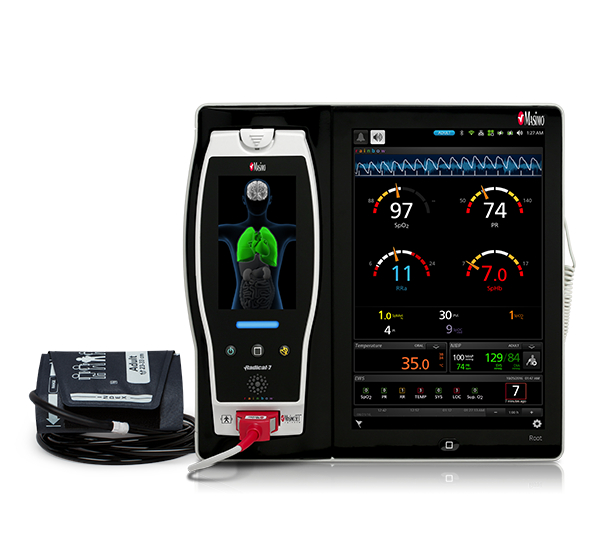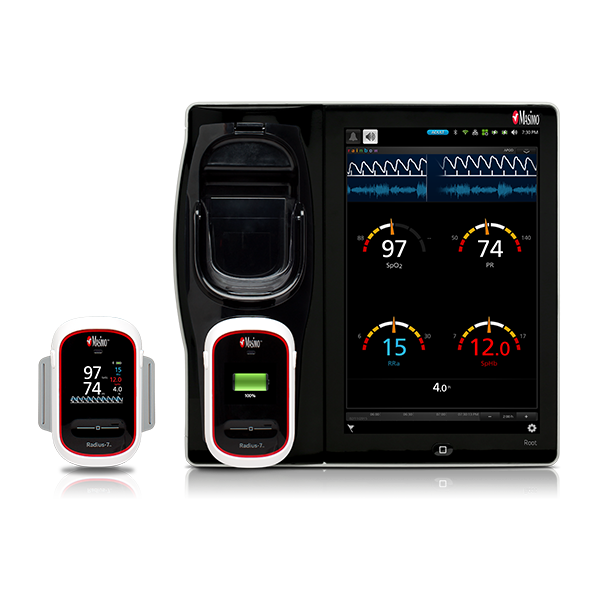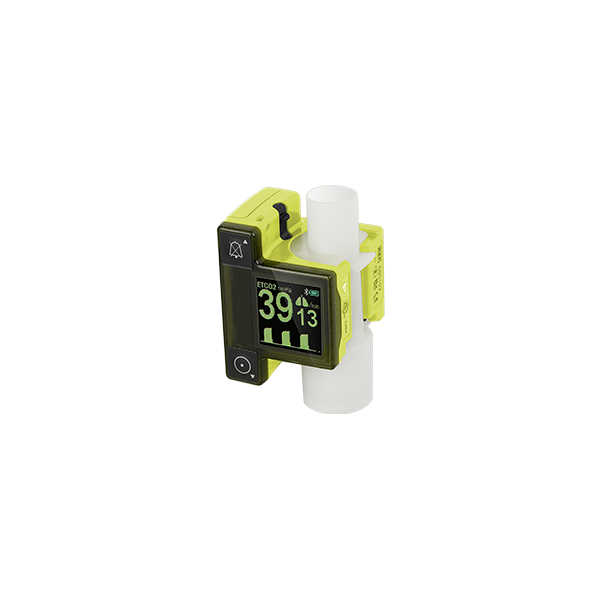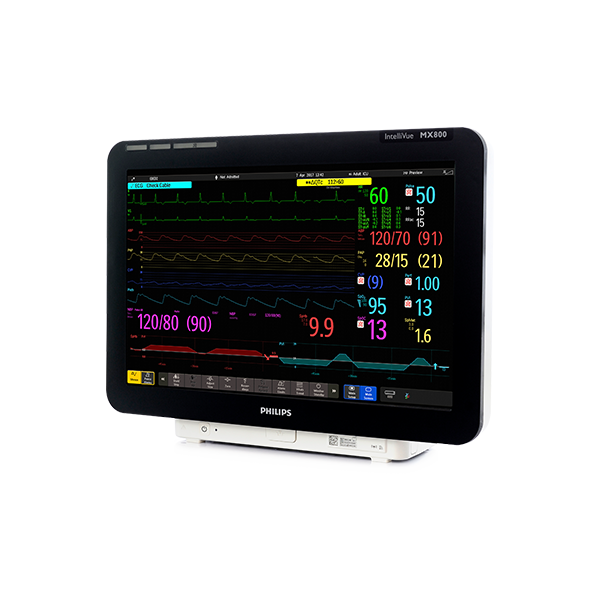Emergency Department
Responding Rapidly and Effectively in a Constrained Environment
Home / Emergency Department
Emergency Department
Today's EDs are burdened by high patient volume, varying patient acuity, and a plethora of standalone monitoring devices that lack connectivity. Scarcities of time and space necessitate rapid patient assessment and triage to limit unanticipated patient deterioration and patient dissatisfaction.
Masimo offers an integrated suite of solutions with advanced measurement capabilities and vital signs monitoring to streamline clinician workflow. From vital signs monitors with automated data transfer to the EMR, to wearable, tetherless, and portable devices designed for short-term monitoring, Masimo provides a full portfolio of monitoring solutions.
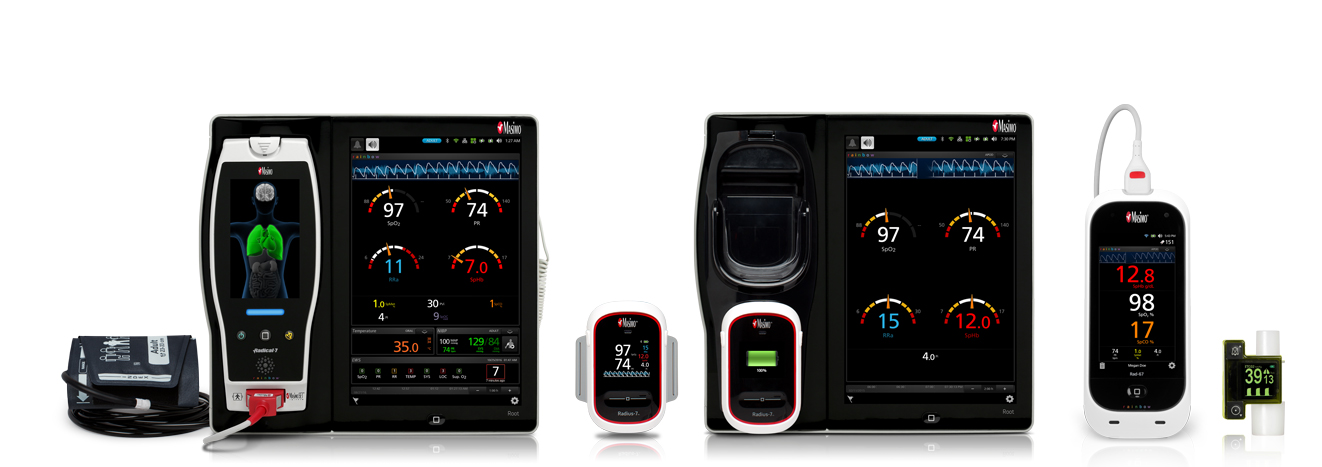
Root with Noninvasive Blood Pressure and Temperature, Root with Radius-7, Rad-67 Pulse CO-Oximeter, and EMMA Capnograph
Efficient Patient Assessment
Efficient Patient Assessment
Root® with Noninvasive Blood Pressure and Temperature
- Offers quick and efficient spot-checking of SpO2, respiration rate, blood pressure, and temperature with a single, portable monitor
- Allows customised clinical assessments, including data such as pain and AVPU scores, to be automatically transferred to a patient’s electronic chart
- Automatically calculates early warning scores (EWS) utilising measurement data collected on Root and additional clinician-input values1
- Mounts easily on a roll stand for tetherless device transport, offering flexibility in situations where space is limited
Device Connectivity
When connected to Iris Gateway™ or Patient SafetyNet™*, Root automates the flow of patient data to the EMR, which may help streamline workflows, including the triage process, improve productivity, and reduce the likelihood of transcription errors.2

Industry Leading Pulse Oximetry Technology
Industry Leading Pulse Oximetry Technology
Performance During Motion and Low Perfusion3
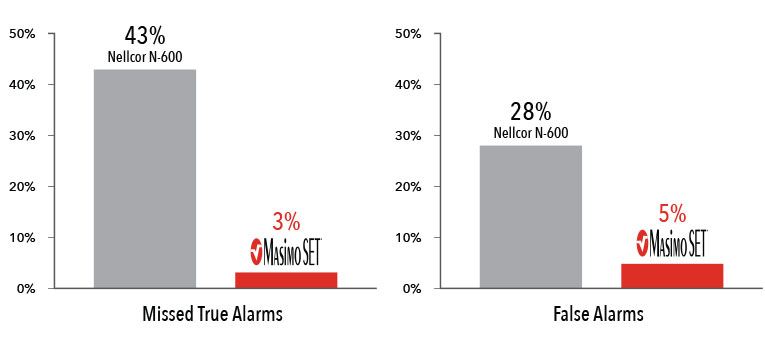
Masimo SET® had 3% missed true alarms and 5% false alarms versus 43% and 28%, respectively, using competitor technology
Results shown are calculated by combining sensitivity and specificity outcomes of the machine-generated and volunteer-generated motion.
Masimo SET® Measure-through Motion and Low Perfusion™ pulse oximetry delivers accurate and reliable oxygenation, pulse rate, and perfusion index even during challenging conditions of motion and low perfusion.3 Through a variety of sensor solutions, Masimo SET® enables assessment of a wide range of patient types and cases in the ED.
Real-time Visibility of Advanced Measurements
Real-time Visibility of Advanced Measurements
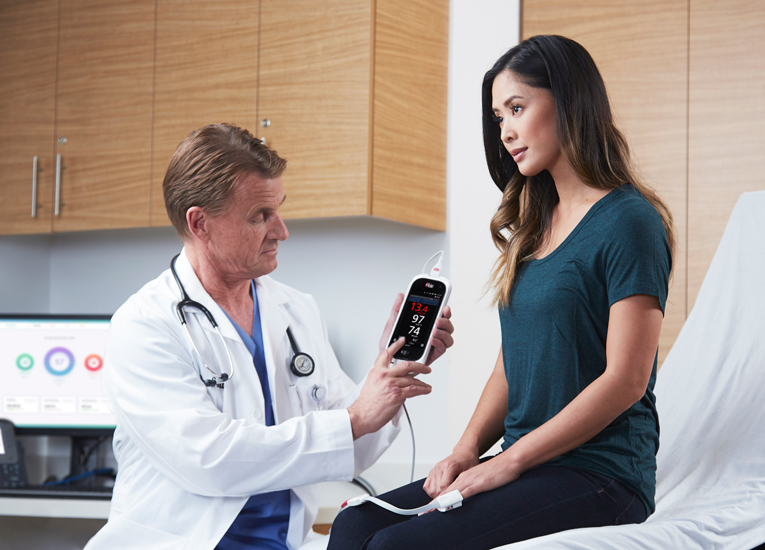
rainbow SET™ technology is a platform of noninvasive measurements and physiologic parameters – which could previously only be measured invasively – that provide deeper insight into a patient’s status. SpCO® and Next Generation Spot-check SpHb®, for example, provide quick and easy assessment of carboxyhaemoglobin and total haemoglobin, respectively, which can help clinicians prioritise admittance and care. Compared to SpHb, Next Generation Spot-check SpHb offers enhanced SpHb field performance through faster measurement results and improved repeatability.
Monitoring Solutions
Monitoring Solutions
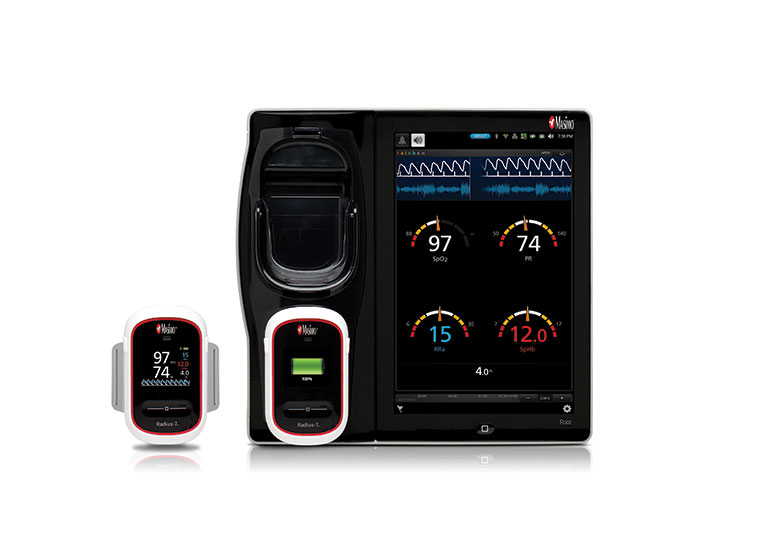
Continuous and Tetherless Monitoring
Radius-7® Pulse CO-Oximeter® enables continuous, tetherless monitoring of patients in the waiting room with supplemental remote monitoring on Root, which may help clinicians adjust care prioritisation based on changes in patient status.
Supplemental Remote Monitoring and Clinician Notification System
Patient SafetyNet is a remote monitoring and clinician notification system which displays near real-time information from any connected Masimo device at a central station and allows for alarms and alerts from bedside devices to be sent directly to clinicians.
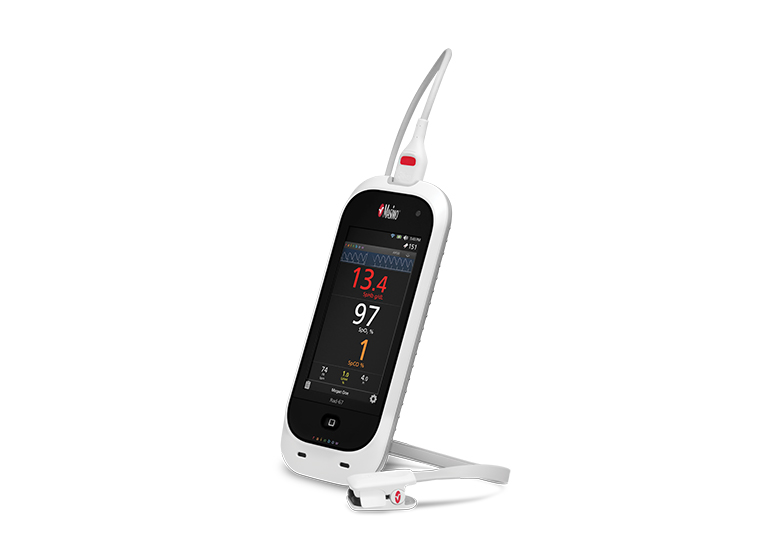
Portable and Versatile Pulse CO-Oximetry
Rad-67™ Pulse CO-Oximeter® features colour touchscreen operation and rainbow SET Pulse CO-Oximetry measurements to enable quick spot-checking. Using the universal rainbow® Super DCI®-mini sensor for patients ≥3kg, clinicians can measure carboxyhaemoglobin (SpCO), total haemoglobin (SpHb), and methaemoglobin (SpMet®) simultaneously with Measure-through Motion and Low Perfusion SpO2 and pulse rate, simplifying spot checking of multiple parameters on a variety of patient populations. This easy-to-use, portable, handheld monitor can be carried between ED bays or care areas and facilitates patient data download directly from the device using a wired or wireless connection.

Flexible Capnography
EMMA™ is a compact, lightweight, mainstream capnograph that requires minimal warm-up time and provides full accuracy in 15 seconds. EMMA is available for short-term monitoring of adults, paediatrics, and infants. Clear, real-time EtCO2 waveforms help clinicians confirm effective resuscitation, assess the depth and effectiveness of compressions, and recognize the return of spontaneous circulation (ROSC).4,5
Measurements
Measurements
Emergency Department Product Solutions
References:
- 1.
As a default, EWS on Root is aligned with the NEWS system established by the Royal College of Physicians using seven (7) physiological contributors as the basis of the scoring system. Royal College of Physicians. National Early Warning Score (NEWS): Standardizing the assessment of acute illness severity in the NHS. Report of a working party. London: RCP, 2012.
- 2.
The Value of Medical Device Interoperability. West Health Institute. 2013.
- 3.
Shah et al. J Clin Anesth. 2012;24(5):385-91.
- 4.
Neumar RW et al. Circulation. 2010;122:S729-S767.
- 5.
2010 American Heart Association.
RESOURCES
* The use of the trademark PATIENT SAFETYNET is under license from University Health System Consortium.
SpHb monitoring is not intended to replace laboratory blood testing. Blood samples should be analysed by laboratory instruments prior to clinical decision making.
SpCO monitoring is not intended to be used as the sole basis for making diagnosis or treatment decisions related to suspected carbon monoxide poisoning. It is intended to be used in conjunction with additional methods of assessing clinical signs and symptoms.
Rad-67 has obtained CE Marking. Not available in the U.S. or Canada.
For professional use. See instructions for use for full prescribing information, including indications, contraindications, warnings, and precautions.
PLCO-001736/PLM-11198A-0318
